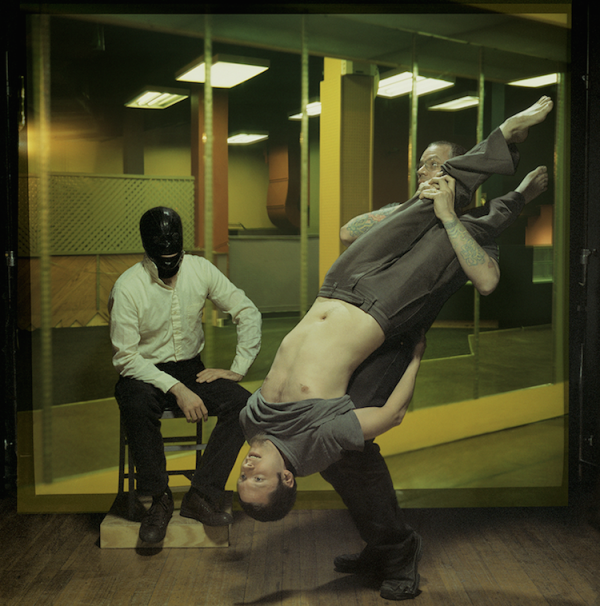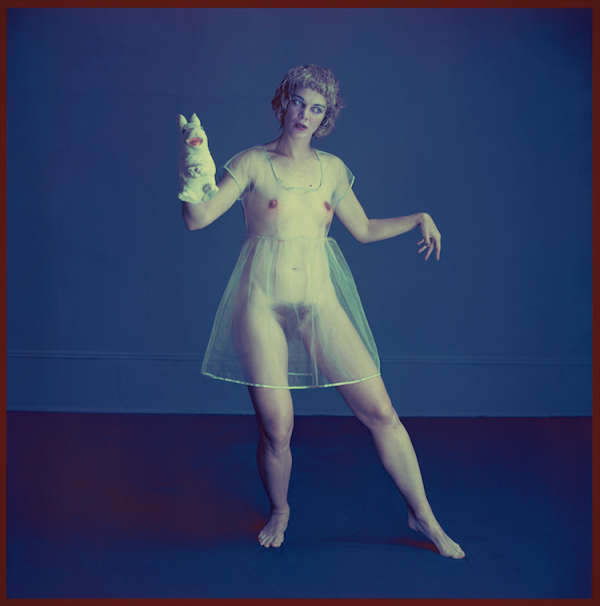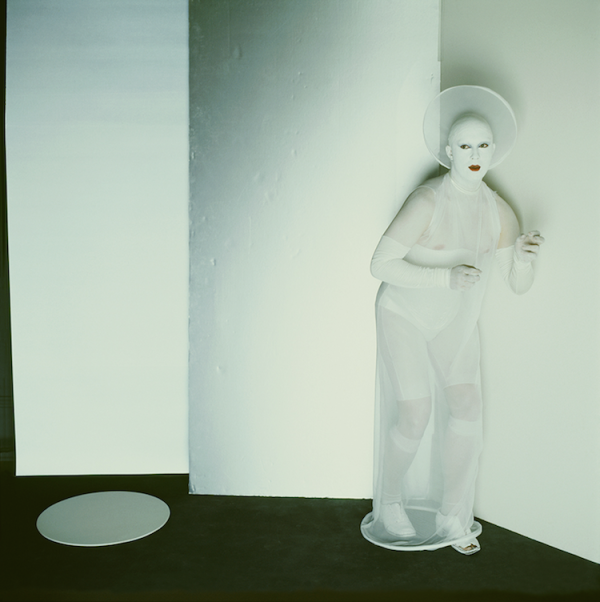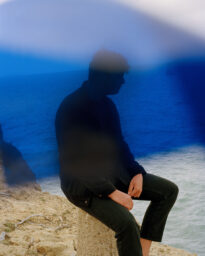William J. Simmons on Josef Astor at Participant Inc.
Writer William J. Simmons reviews Josef Astor’s recent exhibition at Participant Inc., New York, which connects photography, installation, and dance. The show was curated by Astor’s frequent collaborator and subject, the cult musician Antony.
This article originally appeared in Issue 12 of the Aperture Photography App.

Joe-Ho, 1996. All photographs by Josef Astor, courtesy Participant Inc.
Josef Astor’s résumé runs the gamut of the art world—an instructor at the School of Visual Arts, an acclaimed director, and a commercial as well as fine art photographer, he has had a varied, decades-long career. Astor received an equally complex treatment in his recent exhibition at Participant Inc., an incisive and long-overdue survey of his work from the 1980s through the 2000s. Lovingly curated by Antony—one of Astor’s longtime models—Displaced Persons exists at the intersection of dance, photography, and documentary, and took a humorously critical eye toward art-historical conventions. Astor’s project is an archive of an era, full of cross-disciplinary communities and collaborations, which no longer exists. Displaced Persons illustrated this unsure mixture of bodies and histories while never coalescing into a flattened narrative. A simultaneously celebratory and sorrowful air filled the space as Astor invited us to a lyrical examination of the unforeseen and, at times, paradoxical possibilities of a photograph.

Peeesseye, 2005

Page + Wid, 1999
Using rear-screen projections (as in the oft-overlooked series in the same vein by Laurie Simmons and Cindy Sherman) as well as inventive costuming, Astor created an environment rather than purely a show. As a result of his mastery of color manipulation on these archival prints, a sickly pallor was cast over the gallery, broken from time to time by bursts of glamorous purples and reds. In Peeesseye (2005), a figure that appears to don a bondage mask presides over what could be either a fight or an avant-garde performance; the room’s gaudy fluorescence suggests an even stranger version of Philip-Lorca diCorcia’s hustler images. Light cast from a Del Taco sign in Astor’s Ralph Smith, 21 years old, Ft. Lauderdale, Florida, $25 (1990–92) results in a stunningly artificial, yet uncannily real dreamscape. For Astor, the body is always fighting for movement in the fixed field of the photograph. The dancers from Astor’s collaborations with Charles Atlas, such as the combatants in Peeesseye, seem to perpetually struggle against various forms of bondage: a shackled Leigh Bowery is grounded but no less fabulous.

Annie + Puppet, 1994.
These issues—history, embodiment, and performance—reach an apex in Skewed Halo (1999), a portrait of Antony himself. The makeshift studio walls and single pale disc on the floor, reminiscent of an ersatz minimalist sculpture, provide a hiding place for a crouching figure clad entirely in white save for his blood-red lips. However, the most interesting detail is the most obvious: Astor has dressed his model in an enormous condom, separating Antony’s body from the surroundings with a tenuously protective layer. In Astor’s elegant combination of photography and performance, we are presented with the specter of the AIDS crisis—at once a tribute and an opportunity for a cross-generational reckoning with this tragedy. Astor confronts us with our own permeability, and the possibility of the body’s decay, just as various artistic disciplines become permeable in his hands.

Skewed Halo, 1999.
Displaced Persons was equal parts memorial and art exhibition—Leigh Bowery, a muse for many, lost his life to AIDS-related illness—and, as a result, Astor produced a space for reflection on a bygone New York City, even as he posed crucial aesthetic questions running the gamut of normative and non-normative art histories.
Displaced Persons was on view at Participant Inc., New York, from May 31 to July 12.


























